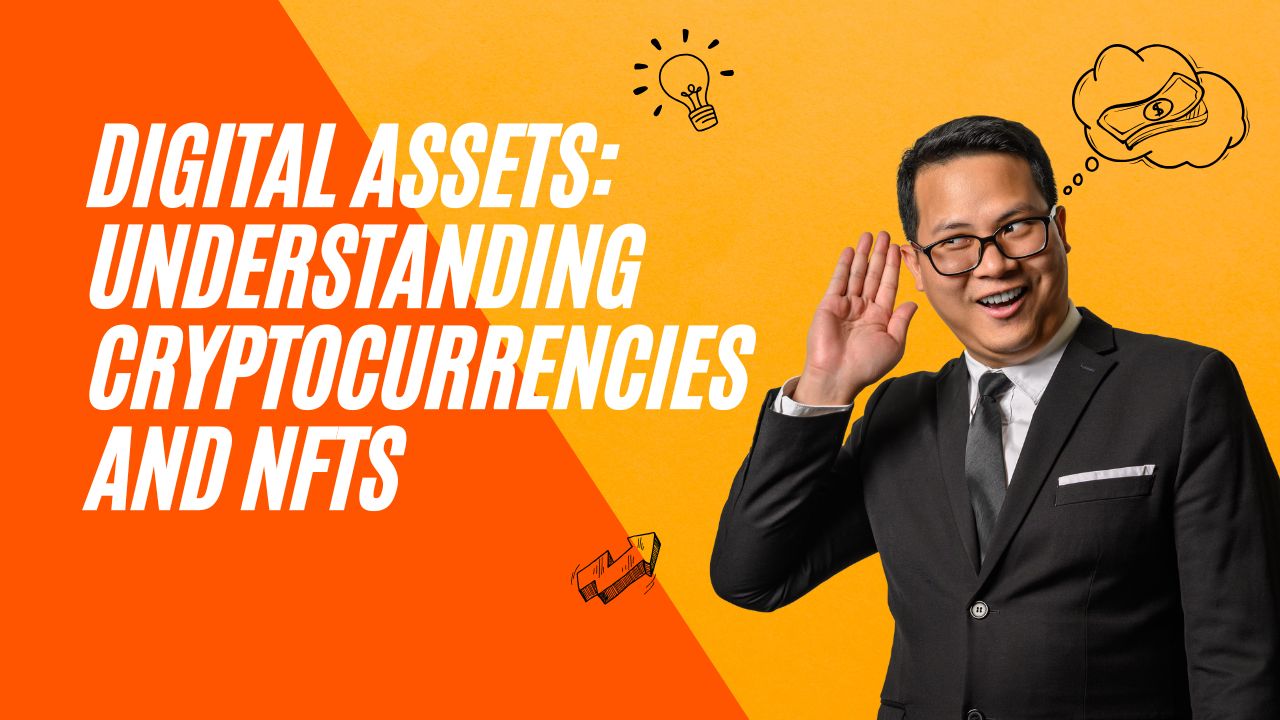Digital Assets: Understanding Cryptocurrencies and NFTs
The world of finance and ownership has experienced recent interest in digital assets. Among the most prominent of these have been cryptocurrencies and non-fungible tokens, or NFTs. Both are innovative uses of blockchain technology but for different purposes and functionalities.
What are Cryptocurrencies?
Cryptocurrencies are electronic or virtual currencies whose existence is based on cryptography and run through decentralized networks based on blockchain technology. The most popular of all the cryptocurrencies are Bitcoins that were launched in 2009 as a peer-to-peer electronic cash system. Ever since then, thousands of other cryptocurrencies have been launched, each with some different feature and purpose.
The most attractive feature of cryptocurrencies is their decentralization. Unlike a regular currency issued and controlled by governments, cryptocurrencies are decentralized currencies without any kind of regulation from a central authority, which can increase security and reduce risk associated with fraud. Transactions are recorded on a public ledger, ensuring that the transactions are transparent while the users remain anonymous, ensuring minimal loss in privacy. Such a decentralized nature of cryptocurrencies also makes transactions cheaper because there would be no intermediary for transferring the transaction.
But investing in cryptocurrencies carries high risks. Their prices can fluctuate dramatically, depending on prevailing market sentiment, regulatory news and changes in technology. In addition, in many jurisdictions, the regulatory environment surrounding cryptocurrencies is unclear and thus poses a risk to investors. Security issues, ranging from hacking to fraud, are also prevalent. The following example illustrates this: several cryptocurrency exchanges have been hacked in recent years.
Introduction to Non-Fungible Tokens (NFTs)
While the former are a means of exchange, NFTs are supposed to prove ownership of unique digital items or assets. Unique, NFTs are not exchangeable since one Bitcoin is just as good as another but are unique; their popularity has been developed in many spheres like art, gaming, and collectibles.
NFTs are blockchain-based applications that ensure authenticity and provenance of digital assets. Artists and creators can, in fact, tokenize their work, thereby selling it directly to a consumer with no middlemen or mediators in the value chain; hence, totally transforming this world called art, enabling the monetization of the digital artists’ creations without giving up too much control of their intellectual property.
Despite the challenges, the NFT market is very promising. The risk of speculation pushing prices to unsustainable levels has led to worries of a possible bubble and market correction. Secondly, the use of blockchain technology, especially with the proof-of-work system, has become one of the most significant environmental problems. Finally, the value for the NFTs in the long run cannot be known since the trends on digital art and collectibles change within no time.
Future of Digital Assets
With more advances in digital assets, cryptocurrencies and NFTs are going to highly influence the future economy. Businesses and financial institutions, at this point, adopt and consider these technologies, which really shows a high level of acceptance. The advancement of CBDCs amongst other countries can imply that the world will not take much time breaking the barriers existing between the traditional and digital finance world.
Of course, investors need to understand the subtleties behind cryptocurrencies and NFTs. They’re really fascinating opportunities for diversification with potential returns, but you will first require a comprehensive understanding of the risks and dynamics involved in such markets. Therefore, research, study, and be cautious enough to find your way around in such fast-changing scenarios.
Conclusion
Newer digital assets, such as cryptocurrencies and NFTs are now in a way that they represent something like a new frontier in finance and ownership. Risks are plentiful and so are uncertainties, but they open possibilities with innovative investment opportunities where advancements in technology and regulatory frameworks will further clear the future of digital assets. The investors should, therefore, remain well-informed and agile in this dynamic environment.
Share this content:



